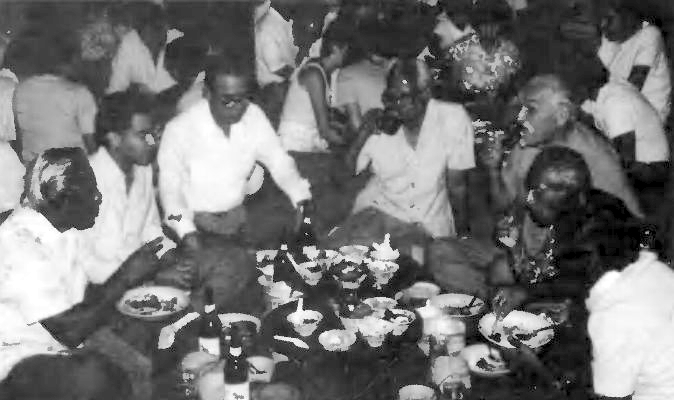![]()
The Words of the Kaufmann Family
|
|
The Words of the Kaufmann Family |

Discussion
at the Infra-Islamic conference in Istanbul, Turkey, September 1985.
The Council for the World's Religions was founded by Father at the fourth God Conference in August 1984 in Seoul. The Council was set up to end the tragedy of religious conflict by fostering inter-religious harmony and accord.
Father knows that divine and human misery are generated not only by conflict between believers from different religions, but also by sectarianism and denominationalism within religions. Inter-religious harmony (between religions) cannot occur in the context of intrareligious discord (within religions). For this reason the Council sponsors conferences and activities designed to promote mutual understanding, respect, and cooperation of an intrareligious as well as an inter-religious nature.
On June 26, 1986, scholars and religious leaders from all religions and all parts of India gathered in the southern city of Bangalore, India, to attend the conference "Religious Harmony: Problems and Possibilities:' The conference was convened under the auspices of the Council for the World's Religions by Dr. K. L. Seshagiri Rao, a Hindu scholar from the University of Virginia in Charlottesville.

Sharing
a meal at the Infra-Buddhism conference in Chiang Mai, Thailand,
August 1985.
It was an occasion of some "firsts" for the Council. This marked the first of seven Council conferences scheduled for 1986. A more important first, however, was the inter-religious nature of this conference. (The first five conferences of the Council were intrareligious -- the necessary foundation for successful inter-religious dialogue.) The Bangalore conference was a humble but significant beginning for establishing harmony between the many faiths that exist side by side in India. Presently the nation is torn by religious conflict that has resulted in actual warfare, including massacres of worshipping civilians. While lives were being lost due to religious conflict in the north, representatives of the very same religions were at Bangalore sharing and agonizing over how peace might be fruitfully pursued. Twenty scholars, representing Hindu- ism, Islam, Sikhism, Christianity, Jainism, and Zoroastrianism took part.
The approaches to religious harmony expressed in the papers and discussions ranged from the mystical to the socioeconomic. A deep serious- ness and a proclivity to activism characterized this particular group. "The purpose of this conference;' Dr. Rao explained, "Is to sow the seed or plant the sapling of inter-religious harmony." In retrospect it is fair to say that the purpose was successfully achieved.
One participant described the conference as "an inter-religious pilgrimage from which the participants returned different persons, trying to understand and respect each other's minds." Our purpose, said another, is "to probe the nature of the Ultimate Reality, to rise above the mundane things, to fall in love with God, and eventually with man. [These] are the things which can easily bring people from different religious traditions together and forge that missing harmony which should be and has been the original goal of all religions."
The year 1986 promises to be a busy one for the Council. The six remaining conferences scheduled for this year will occur throughout the world, serving a broad range of believers.
